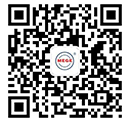SKF Wind turbine main shaft bearing design considerations
09 Oct,2019

A booming wind energy sector means bigger turbines, working in harsher environments. To achieve optimum bearing performance in these demanding applications, OEMs need to take a whole-system approach, says Steffen Beck, SKF Wind Application Engineer.
The global wind energy market has grown rapidly in recent years, achieving capacity increases and cost reductions that have exceeded the expectations of many industry observers. A key element of the industry’s expansion has been the development of bigger, more powerful turbine designs.
In addition, the use of off-shore generation sites, which enjoy consistent wind conditions and permit the installation of large turbine arrays, has also helped the industry to ramp up its capacity at great speed. By the end of 2017, Europe’s offshore wind energy capacity was approaching 16 gigawatts, with more than 4,000 grid-connected turbines operating in the region’s waters. The largest turbines currently in operation have a capacity of 8.8MW. The first 9.5MW units were under construction in the summer of 2018, with 12MW machines entering the development phase.
These huge machines, which can have a total height of upto 230m and rotor diameters in excess of 160m, present a number of significant engineering challenges. One critical element is the main shaft bearing arrangement. These bearings, which sit within the nacelle at the top of the turbine tower, must support the weight of the rotor, along with additional loads generated by the wind, while allowing it to spin freely and transmit torque to the generator.
Wind turbine main shaft bearings operate in difficult conditions. They rotate at relatively low speeds of around 10rpm and experience continually variable loads created by fluctuations in the air flow over the turbine and adjustments made by its control system. In offshore applications, turbine bearings may also be exposed to corrosive seawater. In the largest turbines, these bearings have an internal bore of more than 2m, and the high cost and technical difficulty associated with their replacement means operators want a bearing that will last for up to the full 25 year operating life of the turbine.
One problem, multiple solutions
There is no single ideal configuration for turbine main shaft bearings. The design of the turbine’s mechanical power transmission depends on multiple factors, including the available space within the nacelle, the configuration of the gearbox and the specific operating regime of each unit.
Some turbine designs use a direct-drive approach, for example, in which the generator is mounted around the main shaft with no intermediate gearing. Others, especially the very largest turbines, use a relatively long shaft inside the nacelle in order to keep the blade tips clear of the tower as they are deflected by wind loads.
Large, modern turbines use a variety of bearing setups.
• Locating and non-locating involves at least two separate bearings between the main shaft and the generator: a locating bearing which is exposed to both axial and radial loads, and a non-locating bearing that accommodates only radial loads.
• Cross locating TRB’s
• Moment bearings
• Three point suspensions - that involve one locating bearing and gearbox.
Turbine manufacturers also adopt different design philosophies in their choice of bearings for different roles. Some turbines are more flexible than others and can accommodate misalignmants without experiencing parasitic loads from shaft deflection. This can be achieved by using two sets of spherical roller bearings (SRB) (one locating and the other non-locating), or an SRB and a CARB bearing combined (as CARB bearings can accommodate axial deflection and misalignment). In the SRB design, the rollers have some freedom to settle position within the bearing, accommodating deflection and misalignment while ensuring that loads are distributed evenly across the surface of the rollers.
Other manufacturers normally use more “rigid” setups, such as two cross located TRBs. This setup copes well with the very high axial loads experienced by large turbines, but as the bearings must operate with a set pre-load they require a high level of assembly precision to perform correctly.
While there is considerable debate within the industry about the relative merits of different bearing arrangements, analysis, testing and real-world experience have shown that all the currently adopted configurations can operate reliably. Reporting in the International Journal of Renewable Energy Research, for example, researchers from the University of Technology of Troyes, France, found that neither the type of bearing used nor its location were influencing factors on the incidence of wear in wind turbine bearings.
The details make the difference
As with so many engineering problems, therefore, bearing type and arrangement are not a panacea for the challenges of wind turbine reliability. Instead, manufacturers need to ensure that, whichever configuration they adopt, the bearings are designed, sized and manufactured to suit the operating conditions they will experience. And as in other areas of high-performance engineering, it is the details that matter: ensuring that all the bearings in a system are designed to work together, for example, with appropriate geometry and clearances.
Optimized roller profiles reduce peak stresses when bearings are exposed to transient overload conditions due to wind gusts or internally induced vibration. High purity materials and carefully controlled heat treatment during manufacture promote higher bearing load capacities and a longer service life.
Manufacturers also need to take a whole-system perspective. It is becoming increasingly desirable to integrate different drivetrain components within the turbine in order to reduce weight and space requirements. For example, some designs integrate one of the main rotor bearings with the gearbox. If this is done, it becomes essential to de-couple the rotor bearing and its surrounding structures from the subsequent gear stages, to ensure that deformations in the bearing do not affect the performance and reliability of the gearbox.
With years of field-experience and a strong track record of partnership with many of the world’s leading wind turbine makers, SKF continues to work at the forefront of wind turbine bearing design and manufacture. And as the evolution of the industry continues to create new challenges, we are developing new capabilities to meet them. The SKF Sven Wingquist Test Center in Bavaria, for example, is the first test rig in the world that can not only test a single wind energy bearing (with an outside diameter of up to 6 m), but also the complete bearing assembly – including adjacent customer components – under realistic load conditions.












